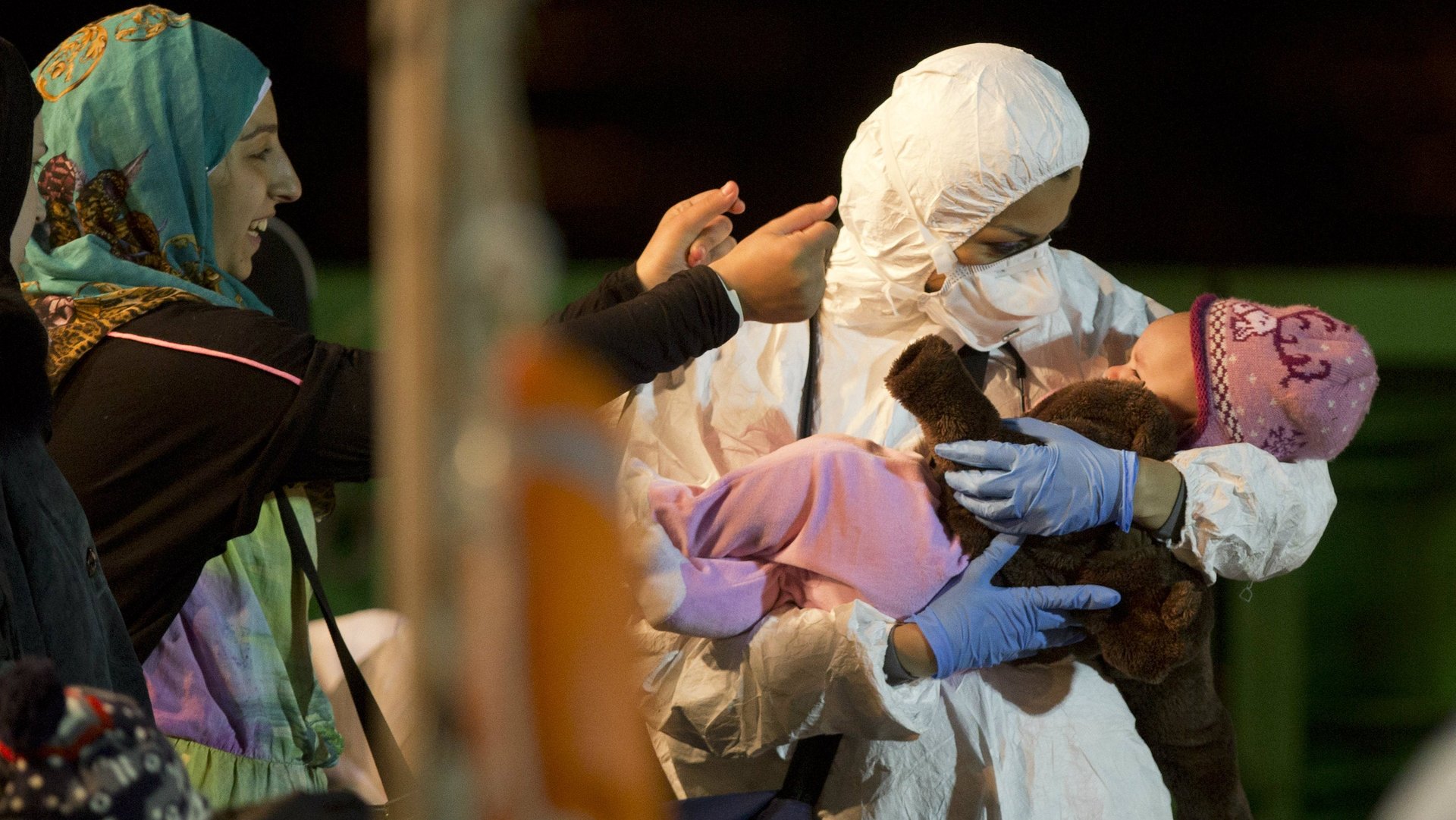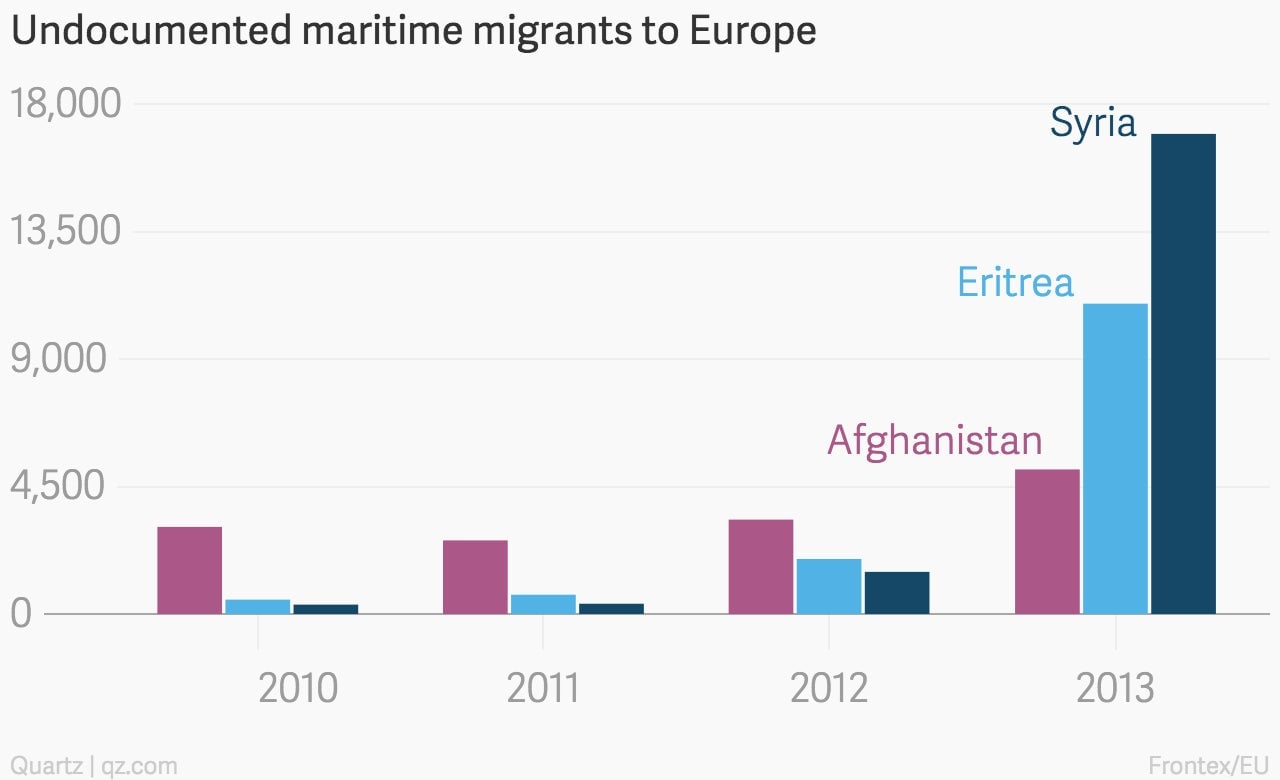Europe’s shipwreck dilemma: Could rescuing migrants lead to even more deaths?
The sinking of a smuggler’s boat carrying some 700 people from Libya to Sicily this weekend may result in the worst-ever death toll from an attempted migrant crossing, and is raising the pressure on European governments to stop the carnage.


The sinking of a smuggler’s boat carrying some 700 people from Libya to Sicily this weekend may result in the worst-ever death toll from an attempted migrant crossing, and is raising the pressure on European governments to stop the carnage.
An estimated 1,500 migrants have drowned trying to reach Europe this year—a roughly 15-fold increase from the first four months of 2014, when 96 people died, according to the International Organization for Migration. In addition to the latest disaster, which had only 28 survivors, an estimated 400 people died in a similar incident last week. Some 10,000 migrants were rescued just between April 10 to 16 by Italian naval forces and commercial ships, according to the IOM.
The spike in the number of migrants has come in the wake of the end of Italy’s Mare Nostrum operation, which rescued about 100,000 people since it started in late 2013, but was terminated in October due to a lack of funding. The EU’s Operation Triton, which replaced it, is cheaper and far more limited in scope.
The EU is convening an emergency meeting to discuss the crisis, but the battle lines among its members are already drawn.
Human rights groups and some EU states want more money spent on search and rescue operations that they see as a moral imperative to prevent more deaths. “The EU may have the means to rescue the refugees fleeing the hell of Syria and Libya, but it is letting them drown,” German jurist Heribert Prantl wrote in the Sueddeutsche Zeitung, as reported by Reuters. “Europe is using dead refugees to shield itself from the others.”
On the opposing side are countries, especially the United Kingdom, who argue that a broader safety net for migrants in the Mediterranean Sea would create a “pull factor,” encouraging more people to make the perilous journey.
But there is also a “push factor” that is driving more refugees to attempt a Mediterranean crossing, whatever the risks: the violent chaos in the Middle East, especially in Syria, and the lawless state of affairs in Libya, where most of the recent ill-fated voyages originated.
As violence has increased in the region—along with instability in Horn of Africa countries like Eritrea—so have the number of migrants trying to reach European shores. Here is EU data from 2013, the most recent available; the situations in Libya and Syria have only worsened since:

Libya is woefully under-equipped to deal with the exodus. The Guardian reported that the coast guard in western Libya, where most people-smuggling voyages originate, has only three working boats.
The EU is considering a military expedition to shore up the struggling Libyan government, which has been chased out of Tripoli by a rival faction, according to internal documents seen by Reuters. Another option is to mount a naval expedition to combat oil smuggling and the rise of the Islamic State, which this weekend released a video of captive Egyptian Christians being executed on a Libyan beach.
The EU documents warned that a naval expedition would have to consider ”the operation’s response to the inevitable presence of migration at sea and the ‘pull-factor’ risk,” Reuters reported. That’s a very jargony way to describe the human tragedy that is playing out on Europe’s maritime border.